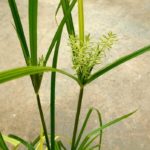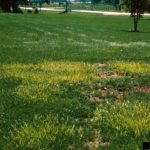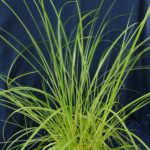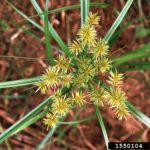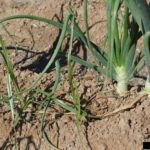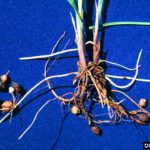Gallery:
- Yellow nutsedge
- Yellow nutsedge infestation
- Yellow nutsedge leaves
- Yellow nutsedge flowers
- Yellow nutsedge stem base
- Yellow nutsedge roots and bulbs
Common names:
Yellow nutsedge, nut grass
Scientific Name:
Cyperus esculentus
Description:
Yellow nutsedge is a perennial sedge in the Cyperaceae (sedge) family. It is considered to be one of the world’s worst weeds and it occurs on every continent (except Antarctica). Like many sedges, yellow nutsedge has a triangular cross section. Its leaves are shiny and yellowish-green with a prominent mid vein and a pointed tip. The flower is a golden brown cluster at the end of the stems. It spreads from a network of underground rhizomes, tubers and bulbs.
Life cycle:
Height of mature plants
12 – 32 inches
Flower color:
Golden brown
Bloom time:
July – August
Look-a-likes:
Yellow nutsedge may be confused with other sedges that have triangular stems, especially tall flatsedge. However, yellow nutsedge has a loose, open flower head, while tall nutsedge has more of a dense, spherical cluster.
Habitat:
Yellow nutsedge grows best in moist areas, and thus it can be found in irrigated agricultural areas, ditches, and along the shores of lakes rivers, streams, and marshes.
Impacts:
Yellow nutsedge is considered to be one of the world worst weeds. It can form dense stands, reducing crop yields and outcompeting native plants for resources. It can be difficult to control because of its underground system of rhizomes, tubers, and bulbs. If even one tuber is left behind, the plant can quickly regenerate. The tubers can also stay viable in the soil for 3 to 4 years. Some research suggests it produces a chemical that is harmful to crops.

